ISO 9001:2015 Clause 8.3 | The Complete Guide to Design And Development
Introduction
Master ISO 9001:2015 Clause 8.3 with our expert guide. We break down design and development requirements, from inputs and controls to managing outputs and changes. Learn how to create products and services that consistently meet customer and regulatory standards.
Design and development is one of the most critical processes in ISO 9001:2015. To ensure organizations deliver products and services that meet customer expectations and regulatory requirements, the standard defines systematic steps for controlling design and development, from identifying inputs to managing outputs, controls, and changes.
This blog explores Clause 8.3 of ISO 9001 in detail, presenting the requirements for design and development processes.
For expert assistance in achieving your ISO certification, partner with Maxicert.
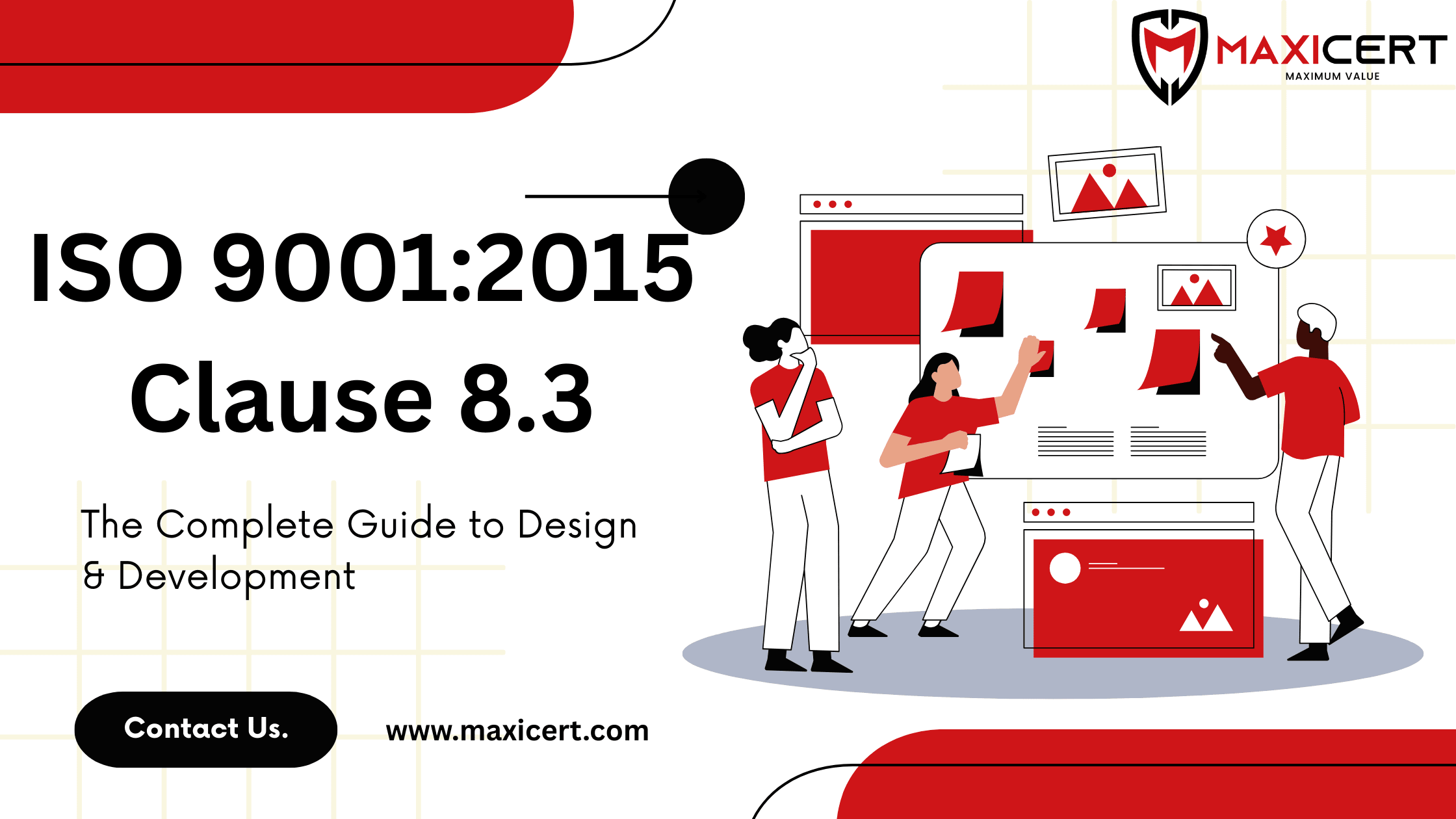
8.3.3 Design and Development Inputs
The organization must determine essential requirements for products and services. These inputs should be adequate, complete, and unambiguous.
The organization shall consider:
- Functional and performance requirements.
- Information from previous similar projects.
- Statutory and regulatory requirements.
- Standards or codes of practice.
- Potential consequences of failure.
Inputs should be determined at the beginning of the process, including both stated and unstated customer needs. Other factors to consider include production, maintenance, and inspection information, as well as supplier and technical criteria.
It is also necessary to determine:
- Statutory and regulatory requirements.
- Other legal requirements.
- Market surveys and industry standards.
- Necessary resources (technology, personnel, etc.).
- Information from past nonconformities and complaints.
- Information from previous similar designs.
A check is needed to resolve any conflicting inputs. All design inputs must be retained as documented information for later verification activities.
ISO 9001:2015 Clause Guide Panel
- Clause 1
- Clause 2
- Clause 3
- Clause 4 – Sub-clause 1
- Clause 4 – Sub-clause 2
- Clause 5 – Sub-clause 1
- Clause 5 – Sub-clause 2
- Clause 5 – Sub-clause 3
- Clause 6 – Sub-clause 1
- Clause 6 – Sub-clause 2
- Clause 7 – Sub-clause 1
- Clause 7 – Sub-clause 2
- Clause 7 – Sub-clause 3
- Clause 7 – Sub-clause 4
- Clause 8 – Sub-clause 1
- Clause 8 – Sub-clause 2
- Clause 8 – Sub-clause 3
- Clause 8 – Sub-clause 4
- Clause 8 – Sub-clause 5
- Clause 8 – Sub-clause 6
- Clause 8 – Sub-clause 7
- Clause 8 – Sub-clause 8
- Clause 8 – Sub-clause 9
- Clause 8 – Sub-clause 10
- Clause 8 – Sub-clause 11
- Clause 8 – Sub-clause 12
- Clause 9 – Sub-clause 1
- Clause 9 – Sub-clause 2
- Clause 9 – Sub-clause 3
- Clause 9 – Sub-clause 4
- Clause 10
8.3.4 Design and Development Controls
The organization shall apply controls to the design and development process to ensure that:
- the results to be achieved are defined.
- reviews are conducted to evaluate the ability of the results of design and development to meet requirements.
- verification activities are conducted to ensure that the design and development outputs meet the input requirements.
- validation activities are conducted to ensure that the resulting products and services meet the requirements for the specified application or intended use.
- any necessary actions are taken on problems determined during the reviews, or verification and validation activities.
- documented information of these activities is retained.
NOTE: Design and development reviews, verification and validation have distinct purposes. They can be conducted separately or in any combination, as is suitable for the products and services of the organization.
The control of the design and development activities that have been determined and planned by 8.3.2 should ensure that the processes’ final output are clearly defined and the necessary review, verification and validation are carried out.
Defining final output of the activities
In general, pursuing the products and services performance can deviate from what the customers really require (like user-friendliness etc.). Therefore, importance in control of design and development is that the personnel always understand what the final output is and that the output realizes the customer requirements.
Review
Design and development review is the formal checking of the design and development planning stages and the output of each of those stages to confirm their adequacy to meet the input requirements, identify problems, and develop solutions.
Other people may be included in the design review, such as:
- The person or people who did the design
- Key people involved in producing the product or service
- Internal personnel and, where relevant, customers and suppliers
If the review reveals problems, it must be decided what actions are to be taken to deal with these. The effect of the actions should be part of the next review.
Verification
Verification is checking that the results at the end of the design process meet the requirements identified as necessary at the beginning of the design and development process. For larger projects, verification may be carried out on a stage-by-stage basis.
Verification methods may include:
- Performing alternative calculations
- Comparing the new design with a proven design
- Undertaking tests and demonstrations
- Checking documents before release
Where verification fails, corrective actions must be decided and included in the next review. If specified in the customer’s order, the customer must be included in the verification process.
Validation
Validation ensures the final product or service is capable of meeting customer needs when applied in the intended environment.
Where validation indicates that the end product does not meet customer needs, corrective actions must be taken and integrated with the next review. Examples of validation include marketing trials, operational testing, or prototype testing.
Validation can be simple for some products, but complex for others (e.g. earthquake-proof building designs). In some industries, customer acceptance of sketches, models, or simulations may suffice as validation.
It is also acceptable for the customer to perform validation and provide feedback.
8.3.5 Design and Development Outputs
The organization shall ensure that design and development outputs:
- meet the input requirements
- are adequate for the subsequent processes of provision of products and services
- include or reference monitoring and measuring requirements, as appropriate, and acceptance criteria
- specify the characteristics of the products and services essential for their intended purpose and safe provision
The organization shall retain documented information on design and development outputs.
Examples of outputs:
- Engineering: drawings and calculations
- Fashion: sketches and material specifications
- Graphic arts: layouts for publications
- Food: recipes
- Advertising: marketing campaign plans
Other outputs can include details for product preservation (e.g. packaging), purchasing, production, or servicing.
Consider who will use the output (stakeholders, regulators, or customers) and in what circumstances. Results can include manuals, prototypes, strength calculations, or service procedures depending on industry.
The ISO 9001 Design & Development Process
Stage 1: Inputs (8.3.3)
- Functional & Performance Requirements
- Statutory & Regulatory Requirements
- Information from Past Projects
- Unstated Customer Needs
Stage 2: Controls (8.3.4)
- Review: Team discussions & formal checks
- Verification: Checking docs vs. inputs
- Validation: Real-world testing against needs
Stage 3: Outputs (8.3.5)
- Drawings & Specifications
- Recipes & Plans
- Manuals & Procedures
Key Loop: Changes (8.3.6)
Outputs feed back into inputs. All changes must be reviewed, controlled, and their impact on requirements assessed.
8.3.6 Design and Development Changes
The organization shall identify, review and control changes made during or after design and development, to ensure no adverse impact on conformity to requirements. Documented information must be retained on:
- design and development changes
- the results of reviews
- the authorization of the changes
- the actions taken to prevent adverse impacts
Changes can arise due to:
- Between release of outputs and production/service provision
- Nonconformities of outputs noticed internally
- Technical issues during testing (stress test, reliability test, etc.)
- Supplier information updates
Or after production/service processes have started:
- Customer specification changes
- New or revised regulations
- Manufacturing process changes/problems
- Market complaints or demand for improved products
- Emergency designation by regulators
- Resource-related changes (e.g. fewer staff, new training sites)
Steps from 8.3.2 to 8.3.5 must be reapplied as necessary when changes occur. The impact of changes on delivered products, services, or component parts must be considered.
In industries such as software development, changes may require re-review of requirements with the customer and complex configuration management.
Conclusion
Effectively navigating ISO 9001:2015 Clause 8.3 is fundamental for ensuring your organization consistently delivers high-quality products and services. By meticulously managing design and development inputs, implementing robust controls like reviews and validation, and carefully handling changes, you can minimize risks and enhance customer satisfaction. A well-documented and controlled design process not only meets regulatory requirements but also fosters innovation and efficiency, establishing a strong foundation for your organization’s long-term success.
For expert guidance and ISO certification services, partner with Maxicert.
Free 60–90 day implementation plan available after consultation.
FAQ
What are the key elements of design and development inputs under Clause 8.3.3?
Key design inputs include functional and performance requirements, statutory rules, and information from similar past projects. All inputs must be complete and unambiguous.
How does an organization control its design and development process?
An organization controls its design process by implementing reviews, verification, and validation activities. These ensure the final design meets initial requirements and that any problems are resolved.
What are the main requirements for design and development outputs in Clause 8.3.5?
Outputs must meet the input requirements and be suitable for production. They must also specify the characteristics essential for the product’s intended purpose and safe use.
Why is it important to manage changes during or after the design process?
Managing changes is crucial to prevent negative impacts on product conformity. The standard requires that all changes be identified, reviewed, and controlled, with documented information retained on all actions taken.
Client Testimonials
What Our Clients Say About Us?
We are trusted by thousands of clients belonging from technology, manufacturing, healthcare and various sectors
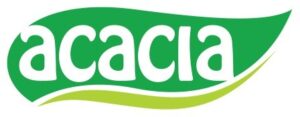

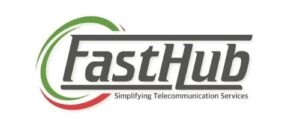

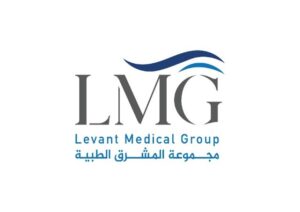


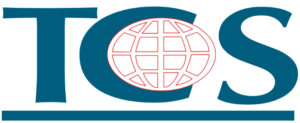
Our overall experience with Maxicert was satisfied. The audit and consulting part was handled carefully, we fulfilled our client requirement of ISO 27001 hassle free.
Kevin Santiago BDM – Clarks Outsourcing, PhilippinesTimely response and knowledge of ISO standards can be seen together in the team of Maxicert, we grow because of the service providers like Maxicert.
Samuel Christopher Quality Assurance Head – OEQA, NigeriaWe did Food safety certification with Maxicert, the service was extraordinary and their consultant had good experience of the subject.
Mr. Venkatesh Production Manager - Acacia Foods and Beverages, ZambiaWe engaged a consultant of Maxicert for our business certification, we now have a well-designed and organized department procedures and we rectify our errors through internal audits regularly.
Abdullah Al Rayes Managing Director – TCS, BahrainTechnical expertise by the team of Maxicert helped us achieving our ISO 13485 certificates, we now proudly say that we have achieved our target, all thanks to the team.
Nady Boustany CEO – LMG, IraqMaxiCert's approach to meet our needs proved instrumental in facilitating a seamless transition throughout the entire ISO certification process for us. Their training sessions are so much helpful.
Ms. Latifa Al Salem Investor portfolio – Ministry of Investment, Saudi ArabiaMaxicert is a one stop solution, we got trainings, documents, audit and certification at one place, they facilitated everything.
Ms. Mariam Chaggama VP – Fasthub, Tanzania

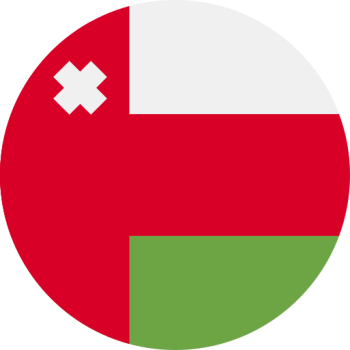



Their presence in Oman made us even better to accomplish our goal of achieving ISO certificates on time, we will definitely recommend their services.
Mr. Sailesh Mohanakrishnan Division Manager – Khimji Ramdas, Oman